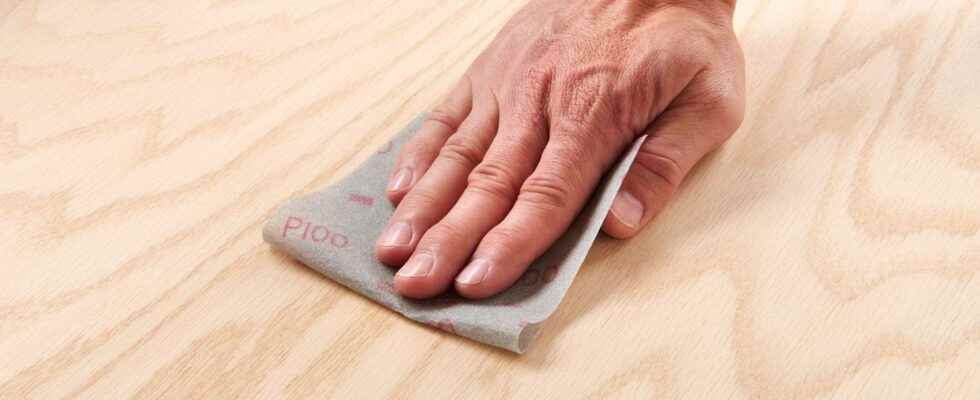Manual action, ginning is a common step in the preparation of surfaces. It is practiced more particularly in the finishing work of the drink and of decoration interior.
In the field of wood, ginning consists of lightly sanding afterapplication of a filler or between two coats of varnish. We proceed with a light hand using a fine to very fine abrasive, so as not to scratch or dig into the film (or film). The operation produces a fine dust, which is then dusted with a lint-free cotton cloth. Obtaining a perfectly smooth surface often requires a succession of varnishing and ginning, before the final coat of finish. For work of cabinetmaking quality, ginning uses abrasives of increasing fineness: 220 or 240, 320 and 400, for example.
Did you know ?
It is frequently said that ginning concerns restricted surfaces (carpentry, interior work, etc.). Let us agree on the meaning to be given to this qualifier. The vitrification of one wooden floor massif generally includes several ginning phases, whether the soil surface to be treated is small or large.
Ginning in building techniques
The wall preparation and ceilings regularly involves a ginning phase. In particular, after coating to eliminate small bumps or drips. In interior decoration, it is necessary to shell the painted surfaces before repair or between two coats of a new painting. Ginning can be done with a pad of steel wool triple zero or abrasive.
Once the surface has been dusted with a slightly damp cloth or sponge, it is advisable to degrease it (withalcohol denatured…) before applying the second coat of paint. Whatever the product in question, ginning always takes place on a perfectly dry surface. Otherwise, we can easily imagine the “bouillasse”.
You will also be interested
Interested in what you just read?
